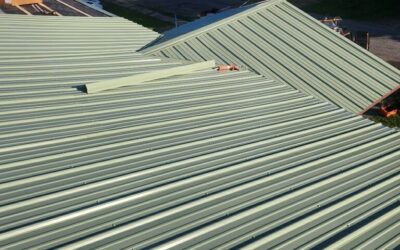The Comprehensive Guide to Slate Shingles: Timeless Elegance and Lasting Durability for Your Roof
When it comes to choosing roofing materials, slate shingles stand out as a premier option that combines timeless beauty with exceptional durability. Known for their natural elegance and remarkable longevity, slate shingles have been used on roofs for centuries and continue to be a favorite among homeowners, architects, and builders who want a high-quality, low-maintenance roof.
In this comprehensive guide, we’ll explore everything you need to know about slate shingles — from their history and benefits to installation, maintenance, costs, and more. Whether you’re considering slate for your next roofing project or simply curious about this natural stone roofing option, this guide will provide you with valuable insights to help you make an informed decision.
What Are Slate Shingles?
Slate shingles are thin pieces of natural stone quarried from slate rock, a metamorphic rock that forms under intense heat and pressure. Slate roofing shingles are renowned for their flat, smooth surface and range of colors, textures, and sizes, which give roofs a distinctive and sophisticated look.
Unlike asphalt or synthetic roofing materials, slate shingles are entirely natural, environmentally friendly, and recyclable, making them an attractive choice for sustainable building projects.
History of Slate Roofing
Slate has been used as a roofing material for over 2,000 years, dating back to ancient civilizations in Europe. Many historic buildings, castles, and churches across Europe and North America feature slate roofs that have lasted for centuries.
In the United States, slate roofing gained popularity in the 19th and early 20th centuries, especially in the Northeast, where many homes still feature authentic slate roofs today.
Benefits of Slate Shingles
Slate shingles offer numerous advantages that make them a premium roofing choice. Here’s why slate shingles are worth considering:
1. Exceptional Durability and Longevity
Slate shingles are one of the most durable roofing materials available, with a lifespan that can easily exceed 75 to 100 years, and in some cases, last over 150 years! Unlike asphalt shingles that typically last 15 to 30 years, slate can protect your home for generations, providing long-term value.
2. Natural Beauty and Aesthetic Appeal
Slate’s unique textures, subtle color variations, and natural stone appearance give roofs an elegant and timeless look that no synthetic material can replicate. Whether your home is traditional, modern, or historic, slate shingles add architectural charm and curb appeal.
3. Fire Resistance
Slate is a naturally fire-resistant material, which means it provides excellent protection against fire hazards. This can offer peace of mind and may even reduce home insurance premiums in some regions.
4. Environmentally Friendly
Because slate is a natural stone, it has a very low environmental impact compared to petroleum-based roofing materials. Slate shingles are recyclable, and their longevity means fewer replacements, reducing landfill waste.
5. Low Maintenance
Slate roofing requires minimal maintenance once properly installed. It is resistant to mold, mildew, and insect damage, which can affect other roofing materials.
6. Adds Property Value
Due to their durability, beauty, and prestige, homes with slate roofs often see increased property value. Slate roofs are seen as a sign of quality and craftsmanship.
Types of Slate Shingles
Slate shingles come in several types depending on their source, thickness, size, and finish:
- Natural Slate: The most common and traditional form, quarried from natural stone deposits.
- Synthetic Slate: Made from rubber or plastic composites to mimic natural slate’s look but at a lower cost and weight.
- Thickness: Slate shingles range from about 1/4 inch to 1/2 inch thick, impacting durability and price.
- Sizes: Typical sizes range from 12×6 inches to 24×12 inches.
- Finish: Slate shingles can be smooth or cleft (rough, split surface), depending on quarrying methods.
Slate Shingles Installation: What You Need to Know
Installing slate shingles requires specialized skills and experience due to the weight and fragility of the material.
1. Structural Assessment
Slate roofing is heavy — often weighing between 800 and 1,500 pounds per square (100 square feet), compared to about 200-350 pounds per square for asphalt shingles. Before installation, a structural engineer or roofing contractor must assess if the roof framing can support the weight.
2. Underlayment and Flashing
A high-quality, waterproof underlayment is installed to protect the roof deck. Flashing around chimneys, vents, and valleys must be carefully installed to prevent leaks.
3. Laying the Slate Shingles
Slate shingles are individually nailed onto the roof deck using copper or stainless steel nails to prevent rusting. They are overlapped in a pattern that ensures water runoff and protection from weather.
4. Skilled Labor
Due to the precision needed and potential for breakage, slate shingle installation requires skilled and experienced roofers. Mistakes can be costly and reduce the lifespan of the roof.
5. Installation Time
Slate roofs take longer to install than asphalt roofs due to the care and precision required, which increases labor costs.
Maintenance and Care for Slate Shingles
Slate roofing is relatively low-maintenance but still requires regular inspections and occasional upkeep to maintain its condition.
Regular Roof Inspections
It’s recommended to inspect your slate roof annually and after severe weather events to identify any broken, cracked, or missing tiles.
Cleaning Debris
Remove debris like leaves, branches, and moss that can trap moisture and cause damage. Avoid pressure washing as it can dislodge tiles.
Repairing Damaged Tiles
If any slate shingles are cracked or missing, have them replaced promptly to avoid leaks. Professional roofers can source matching slate tiles and replace them with minimal disruption.
Maintaining Flashing and Gutters
Check and maintain the flashing around roof penetrations and keep gutters clear to prevent water buildup.
Slate Shingles vs. Other Roofing Materials: How Does It Compare?
Here’s a comparison to help you see how slate shingles stack up against other popular roofing options:
| Roofing Material | Lifespan | Cost per Square (100 sq.ft.) | Weight (lbs per square) | Maintenance | Aesthetic Appeal |
|---|---|---|---|---|---|
| Slate Shingles | 75-150+ years | $1,000 – $2,000+ | 800 – 1,500 | Low | High (natural stone) |
| Asphalt Shingles | 15-30 years | $100 – $150 | 200 – 350 | Moderate | Moderate |
| Metal Roofing | 40-70 years | $300 – $700 | 50 – 150 | Low | Moderate to High |
| Wood Shingles | 20-40 years | $400 – $700 | 300 – 500 | High | High (natural look) |
| Tile Roofing | 50-100 years | $600 – $1,200 | 600 – 1,000 | Moderate | High (varied styles) |
How Much Do Slate Shingles Cost?
Slate shingles are one of the most expensive roofing materials, reflecting their premium quality and longevity.
- Material Cost: $10 to $30 per square foot depending on thickness, type, and color.
- Installation Cost: $15 to $30 per square foot due to the specialized labor.
- Total Cost: Expect to pay $25 to $60 per square foot installed.
Although the upfront cost is high, the long lifespan and minimal maintenance often justify the investment over time.
Environmental Impact of Slate Roofing
Slate roofing is a green choice due to:
- Natural Material: Slate is quarried, not manufactured, with minimal processing.
- Longevity: A slate roof can last more than a century, reducing the need for replacements and landfill waste.
- Recyclability: Old slate can be reused or recycled.
- Energy Efficiency: Slate has natural insulating properties, helping regulate indoor temperatures.
Frequently Asked Questions About Slate Shingles
Q1: Are slate shingles heavy?
A: Yes, slate shingles are quite heavy and often require roof framing reinforcement.
Q2: Can I install slate shingles myself?
A: It’s not recommended due to the material’s weight and fragility; professional installation is best.
Q3: How long do slate shingles last?
A: 75 to over 150 years with proper installation and maintenance.
Q4: Are slate shingles fire resistant?
A: Yes, slate is naturally fire-resistant.
Q5: Can slate roofing be repaired?
A: Yes, damaged shingles can be individually replaced.
Tips for Choosing the Right Slate Shingles for Your Home
- Consider the Roof Structure: Confirm your home can support slate’s weight.
- Pick the Right Color and Texture: Slate comes in various colors—gray, green, purple, red—and textures—smooth or cleft.
- Source Quality Slate: Look for reputable suppliers who provide authentic, durable slate.
- Hire Experienced Roofers: Select roofers specializing in slate installation.
Conclusion: Is Slate Shingles the Right Roofing Material for You?
Slate shingles offer unmatched durability, elegance, and environmental benefits, making them an excellent choice for homeowners who want a roof that will stand the test of time and enhance their property’s beauty and value.
While the upfront cost and installation complexity are higher than other roofing materials, the longevity and minimal maintenance costs make slate shingles a smart long-term investment.
If you’re ready to add timeless sophistication and unmatched durability to your home, slate shingles are a roofing material worth serious consideration.
Would you like me to help with crafting meta titles, descriptions, or blog section headlines optimized for SEO? Or maybe some internal linking suggestions for your website?
 (440) 307-2060
(440) 307-2060

